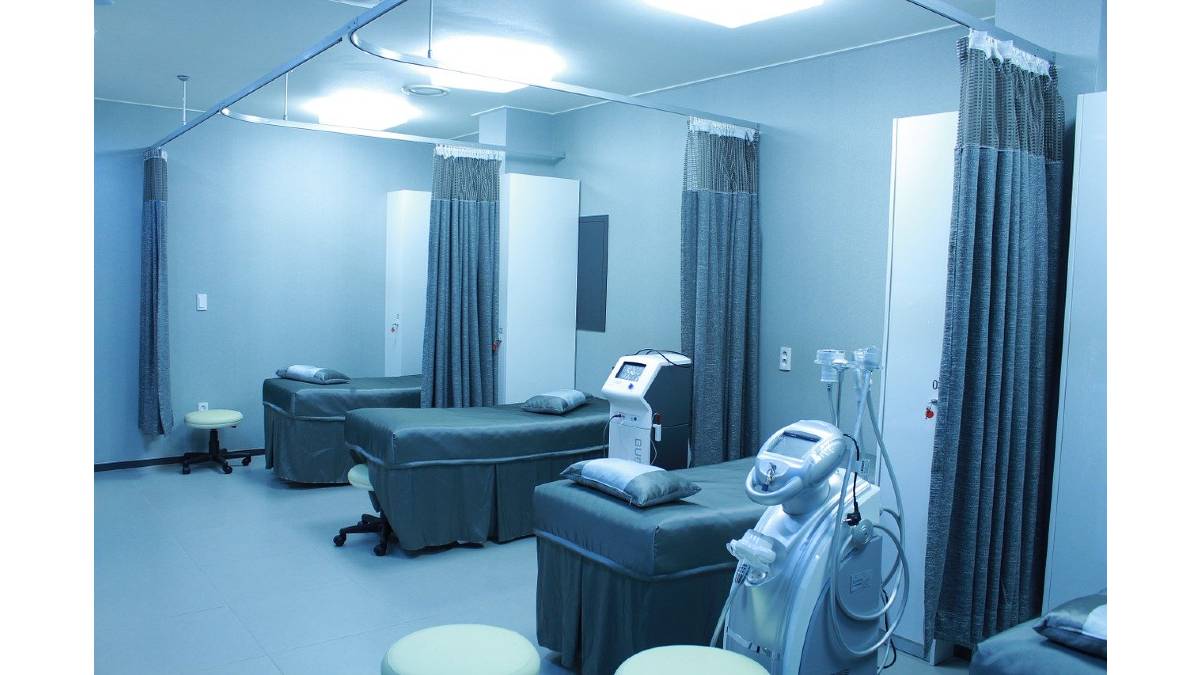 First part of analysis and recommendations to properly design a hospital, taking into account the current demands as a result of the pandemic.
First part of analysis and recommendations to properly design a hospital, taking into account the current demands as a result of the pandemic.
by Alejandro Suárez J. and Julio Rojas S.*
Introduction: The impact that the COVID-19 pandemic is generating that has caused the collapse of the global health infrastructure and that will cause a global economic recession of great proportions that some economists indicate will be greater than the depression that affected the world in 1929 and that lasted during the 1930s; it is then that the imperative need arises to respond to the requirements of current health infrastructure and consider in particular as this document intends, which is to rethink the design of hospital establishments according to the times, taking into consideration that the investments will be insignificant in the face of the damage that this pandemic could cause and the future health emergencies to come.
General foundations
The proposal is based on conceiving the hospital as a dynamic device, capable of reconfiguring, expanding or contracting depending on the demand for benefits.
The experience observed worldwide in the Corona Virus pandemic has taught us that in case of health emergencies we must differentiate the flows of both medical personnel and patients obviously by the probabilities of contracting infection and the other maxim is that the hospital must continue to function normally for the rest of patients who require mandatory treatments such as dialysis, oncological treatments, diabetes, hypertension, risky surgical operations that cannot be postponed etc.
The proposed design includes considerations in Architecture and Specialties.
Architecture
to. Differentiated circulations both vertical and horizontal in pandemic mode and in normal situation.
b. Return to the concepts of dirty corridors in both Surgical Pavilions and ICU / ICU, which gives greater precision in the control of pressures and environmental health of each enclosure.
c. Design Locks with the capacity to house a stretcher in order not to allow the opening of doors of the lock and patient enclosure at the same time, because in that case the desired environmental control is lost. The sense of opening of the doors must be carefully considered since when opening for or against the enclosure positive or negative pressures of the enclosure are generated.
d. Triage completely separated and sectorized from the point of view of controlling negative air pressure.
and. Emergencies completely separated and sectorized from the point of view of controlling the negative pressure of the air.
f. Provide Medical Gases at least Oxygen and Medical Air for Triage, Emergency. The pandemic showed us that patients had to wait long hours before being treated.
g. Consider the extension of surface in the last level, being arranged in thick work, properly closed equipped with the necessary powers and capacities in Specialties.
h. The Emergency Boxes must be designed with the concept of hospitalization, that is, contain the facilities of medical gases, electrical, weak currents, air renewals considered for infected patients of 12 changes per hour and differential pressure control (these renewals and pressures will be designed contemplating 6 renewals per hour and pressure control in normal mode)
i. The Critical corridors of the Hospital will be considered with a width of corridor that allows to install stretchers with patients and a remaining width that allows the normal flow of medical personnel and patients. The walls and / or skies will contain Medical Gases Air, Oxygen and Vacuum, as well as the electrical outlets of force and weak currents necessary to attend to patients located on corridor stretchers. The air conditioning of these corridors will have temperature control and differential air pressure.
j. Consider hospitalization surfaces to be converted to ICU / ICU, for this it is necessary that the partitions located in the corridors are contemplated glazed totally with opacity control on the glazed partitions, in this case the toilets will be located at the bottom of the hospitalization enclosures, the headboards or CPI will be designed the same as those of ICU / ICU.
k. Design the necessary spaces to install a Modular Hospital within the Hospital premises, this concept must necessarily be considered in the design stage, where all the forecasts of both work and facilities will be left, so that in case of health emergency a modular hospital can be quickly set up. The vulnerabilities will also be considered for this case, experience teaches us that in some cases the modular hospitals installed without planning were flooded in case of rains, therefore, consider the vulnerabilities to floods, seismic movements, avalanches, fires, etc.
l. For the previous case, it must be proposed in a natural way, to use the underground parking lots or nearby outdoor areas with connection to the corridors and vertical transport of areas in pandemic mode, thus being able to access the imaging services, surgical pavilions, ICU / ICU, etc.
m. The Modular Hospital must consider hospitalization, emergency wards, delivery wards, ICU/ICU, minor imaging, procedure room, minor feeding center, Waste Zones, changing rooms, bathrooms and showers, etc.
n. The modular hospital must reconsider the spaces of the mortuary and the size of equipment for the collection of refrigerated corpses.
or. Consider materials with antimicrobial properties, such as copper. This could be applied to handles, switches, quincallerías, etc. In this way, the possibility of contagion by secondary contact at the surface level could be reduced.
Specialties
to. The specialty that has had the greatest impact in the case of the pandemic has been air conditioning, where today there are all the technical tools to solve the exact control of differential air pressures, for this it is necessary that the international community that is dedicated to this specialty can reformulate the standards that regulate the air conditioning facilities in Hospitals such as ASHRAE and the European UNE standards, since as a rule negative pressures are not considered in Surgical Pavilions, ICU / ICU, hospitalization and others, not giving space to attend to infected patients, in all these enclosures the norms demand positive pressures of ambient air.
b. To generate positive and / or negative pressures, as has been said today, there are the necessary technical tools to accurately achieve pressure control at the will of selection of medical personnel, who must be trained in the use of these technologies and consider adequate health protocols for these cases in determining the necessary actions and time required to normalize an enclosure in case of an infected patient or an immunosuppressed.
c. It was commented in this document that the specialties must consider in the design stage the incorporation of medicinal gases, electrical outlets, weak currents, sanitary drinking water, fire protection, treated water, rainwater, sewerage and air conditioning, both in the future modular hospital, growth in last level surface, and in providing greater benefits similar to ICU / ICU in hospitalization rooms, isolated enclosures, emergency corridors, Emergencies, Triage and others, therefore, the capacities and powers of specialties will be increased, in this document it can be observed that the beds in pandemic mode will be doubled.
d. Incorporate vulnerabilities identified for facilities
and. In Medical Gases, Mirrors power plants will be designed
f. The design must contemplate leaving the matrix starts of all specialties in the area where it will be implemented in Modular Hospital and on the upper floor.
g. In regular Hospital all critical enclosures must be designed with pressure control which can indistinctly enclosure by enclosure to modify the interior pressures, for these enclosures the medical gas intakes, plugs and weak outlets must have the standard of an ICU / ICU.
h. The air handlers will all be for installation in hospital enclosures, that is, inside with rounded edge profiles, with stainless steel surfaces or with anti-bacterial paint, have UV lamps and ionic system, all will have EC motors; the flow of injection and return will be equal and dimensioned in the most critical case of the enclosure that treats, it will also have a module in the extraction as close to the enclosure that treats infectious patients, this filter can be removed in a Hospital situation in normal mode.
i. Care must be taken in the design of ducts and selection of air diffusers, since air renewals in pandemic mode will be higher in some enclosures, being able to design ducts in parallel, in the same way the UMAS could in some cases consider more than one fan per injection or extraction module.
j. Design air conditioning systems without air return, that is, 100% outdoor air with the use of heat recuperators with recovery percentages greater than 60% of the energy.
k. Electrical system will be designed with redundant critical circuits, with fully separate circuits for the modular hospital
l. Weak current system and fully independent structured cabling for the Modular Hospital.
m. Incorporate the necessary facilities described in architecture for the conversion of Rooms and Isolated Enclosures; in ICU/ICU
n. Incorporate the facilities described in Architecture in Emergency, Emergency and Triage Corridors.
o. Sanitary facilities designed to provide water in pandemic mode knowing that the capacity of beds would force to double the ponds of accumulation of water.
p. The feasibility of installations will be requested according to the demands of consumption and power in pandemic mode.
Architectural proposal
Based on a base structure of 2 circulations, one of Users (Open Circulation) and another of Personnel and Supplies (Closed Circulation), it is proposed to include a third central circulation. In this way, the proposed system works through two perimeter circulations (open circulation of users) and a central one (closed circulation of personnel and medical supplies). In this way it is possible to isolate one of the areas (infectious area), maintaining the functioning of the remaining areas. On the other hand, a system of vertical and horizontal growth is proposed, which is nothing more than an extension of the same base system.
A. Reconfiguration: Through the inclusion of a central circulation, which divides the floor of the building in a 1:4 ratio. This gives the possibility of isolating a section of the hospital, maintaining all internal connections for its proper functioning.
B. Programmed growth: By extending a basic configuration of zoning and circulations, growth areas are established that are coupled to a base structure.
A. Reconfiguration
In a normal situation, the hospital operates by means of segregated circulations, in a conventional way. But at the time of the beginning of the pandemic, the establishment can individualize an entire area, which includes programmatic areas of Open Care, Hospitalization and At. Critical, and at the same time has connection to the areas of diagnostic support.
It is proposed to include a central circulation, which "divides" the different programmatic floors of the hospital, in a 1:4 ratio. In this way an area (25%) can be allocated for the exclusive use of infectious patients, this applies to all areas, whether Diagnostics, Surgical Pavilions, ICU / ICU, etc.
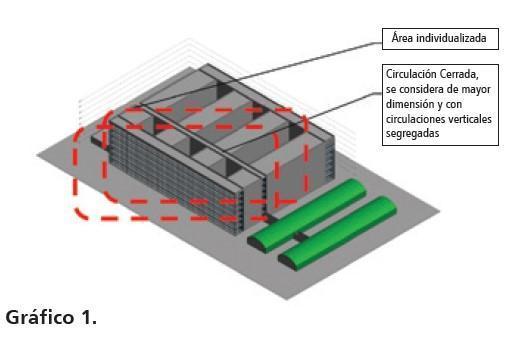
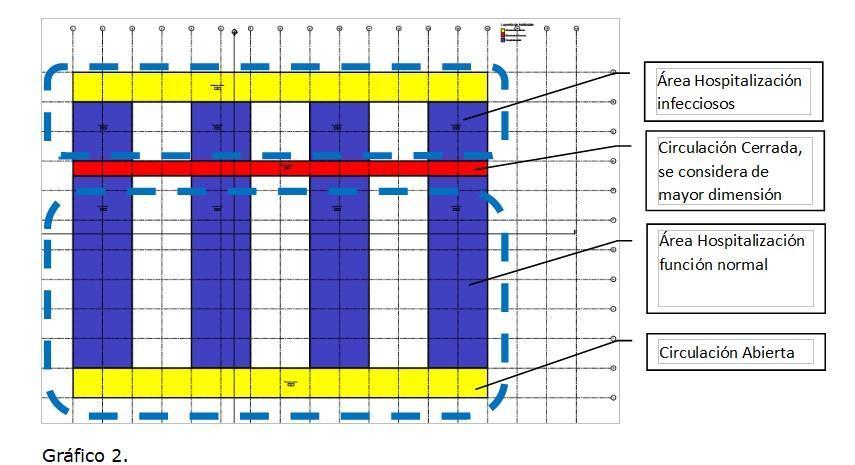
Example of Hospitalization Plant
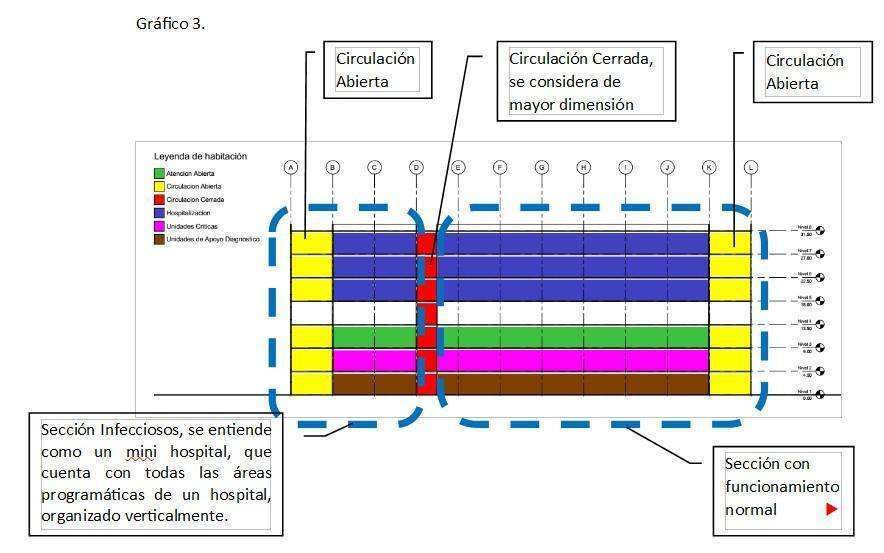
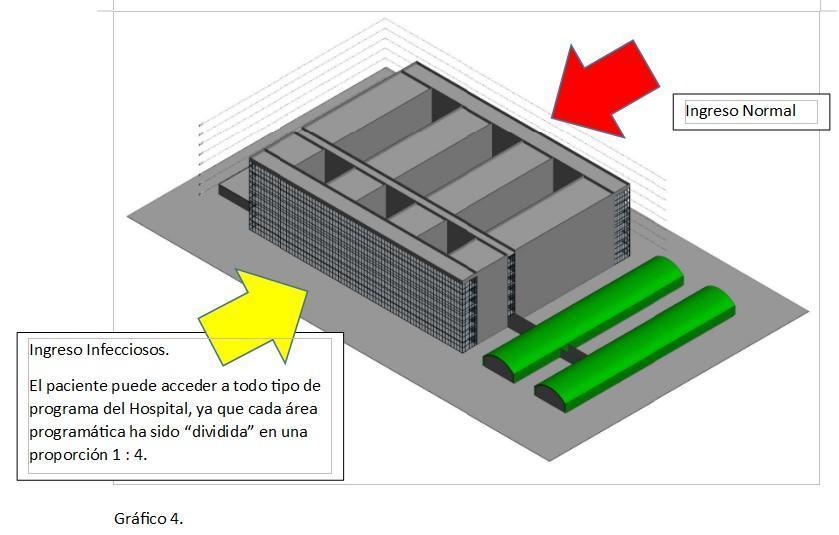
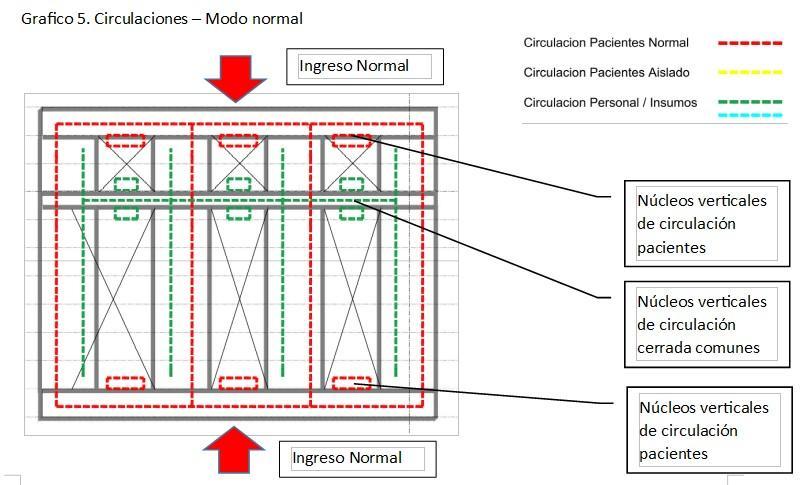
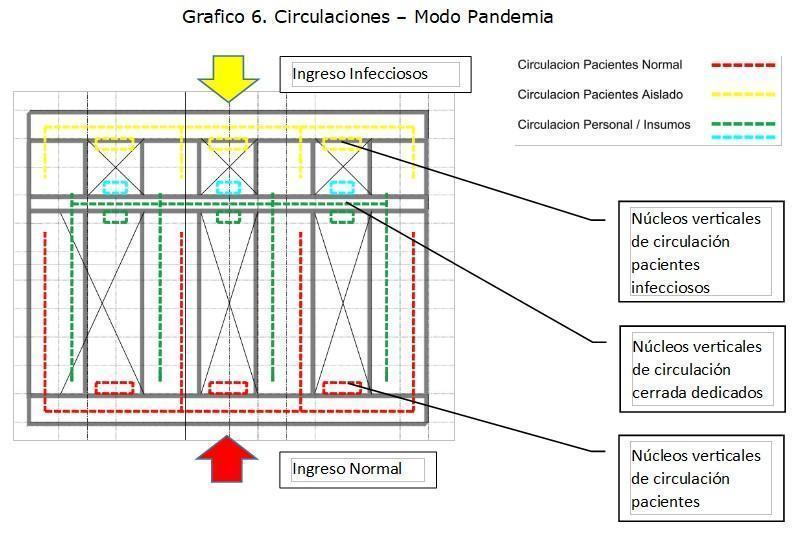
B. Scheduled growth
Depending on the increased demand for benefits, the hospital will be forced to increase the number of beds and care boxes. Faced with this, it is proposed to have a pre-designed area with facilities necessary for its habilitation in times of catastrophes. Faced with this, there are two possibilities for preconceived growth:
• Have parking areas linked to clinical areas, such as Emergency, Consultations, Hospitalization.
Figure 7. Pre design an upper floor, with vertical circulation systems (elevators and stairs) and installations (electrical, air conditioning, gases, etc.). Of course, this increase in demand should be foreseen in terms of supplies, facilities and structural calculation.
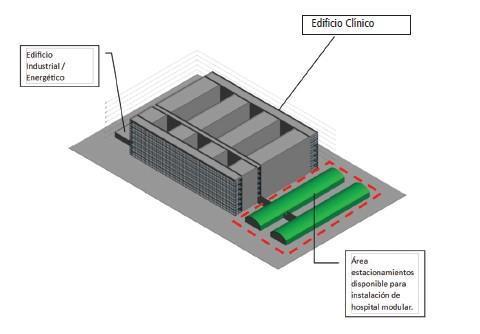
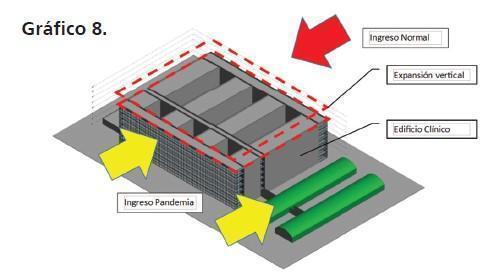
Figure 9. For the operation of the above, the mechanical floor between the critical units and open/closed care areas should be considered. In this way the top floor terrace is "liberated".
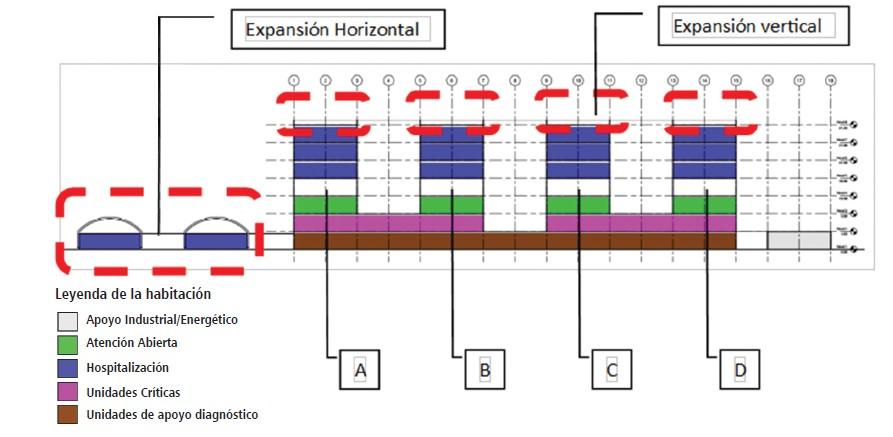
Installed capacity
The model developed, considers an installed capacity of beds; in ratio of 3 beds per room and 51 beds per module x floor. The increase in beds is as follows:
Table 1.
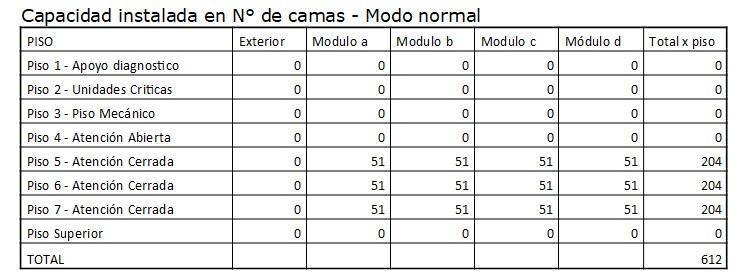
Table 2.
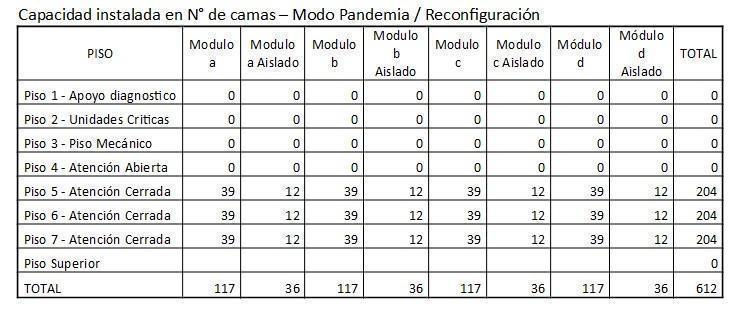
Table 3.
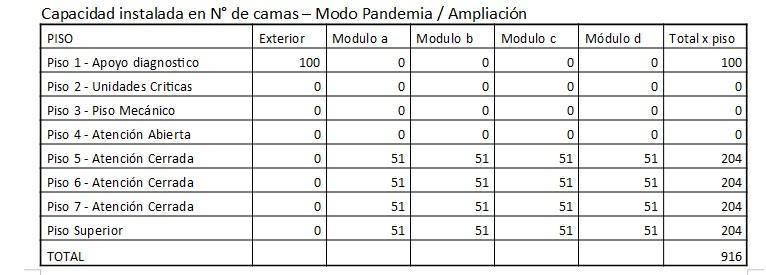
Table 4.
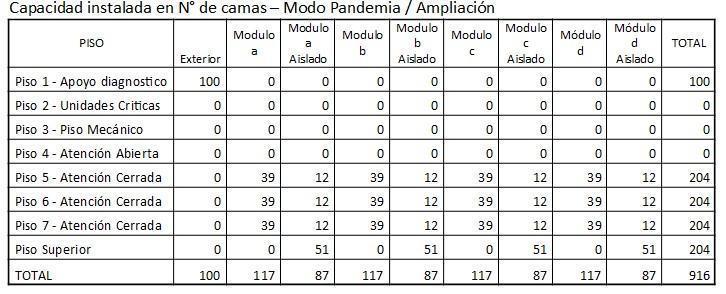
Table 5.
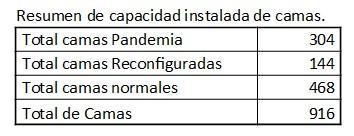
The following can be concluded:
• The proposed system implies an increase of 49.67% in the number of beds.
• The distribution of beds in Pandemic mode is as follows:
Table 6.
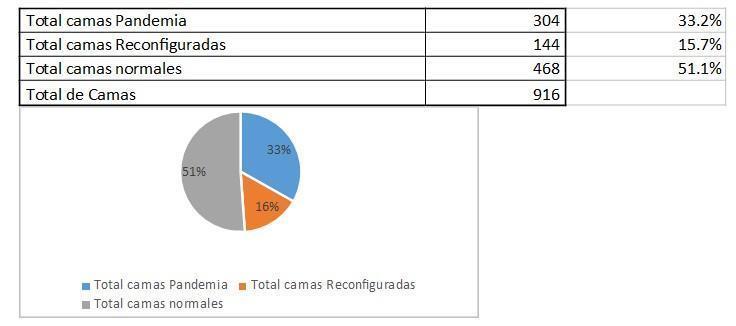
Note: In the second part of this article we will talk about air conditioning in hospital facilities, the electrical installation and the conclusions of this study.
* Alejandro Suárez J., Architect / Julio Rojas S., – Mechanical Engineer and Technical Manager of R&C Ingeniería. www.ryc-ingenieria.cl














